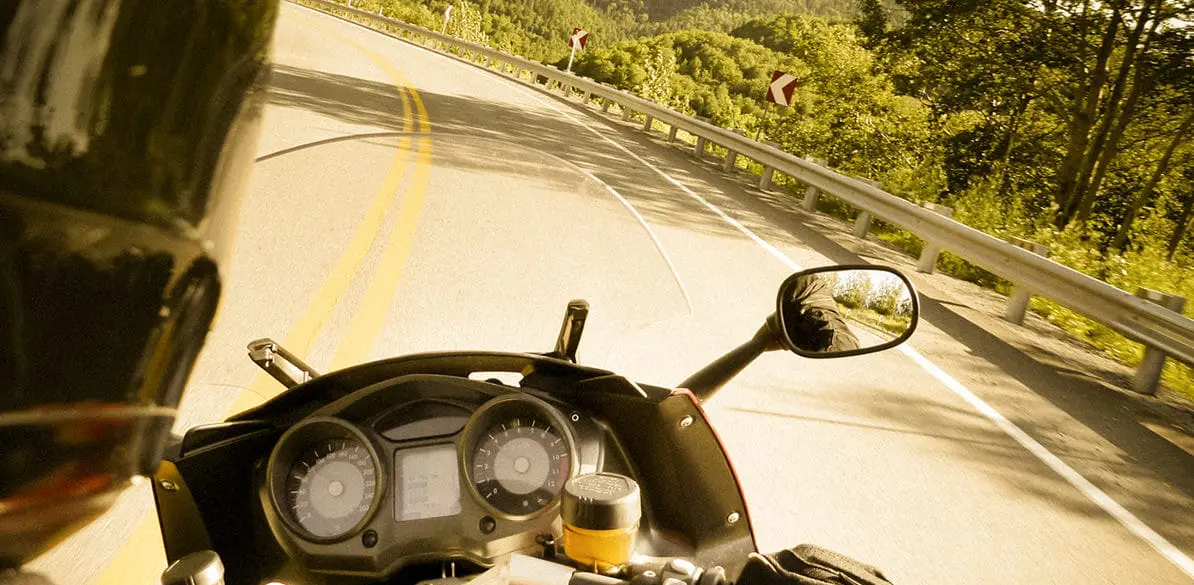Braking on bends

EXAMPLE
I was riding my bike on a conventional highway with one lane for each direction. It was a mountainous area, so there were plenty of bends. When I got close to one of those bends and I was turning into it, I realized that I was going too fast, so I braked. I quickly lost control of the motorcycle and fell to the ground, resulting in some cuts and fractures. Luckily, there was no on-coming traffic and the double barrier rail saved me from a worse outcome.
Second chance:
When a motorcyclist comes up against a bend, they need to take several factors into account. In this case, the motorcyclist made several mistakes which resulted in loosing control of the bike and falling.
Firstly, you need to adjust your speed to the conditions (road, weather, characteristics of the bike, etc.), and especially the angle of the bend. As we don’t know the exact angle, it’s recommended to leave a safety margin so as not to run unnecessary risks.
The cause of the fall was the braking. Or better said, the time of the braking. Upon reaching a curve, we must brake before beginning to plan. If we are forced to brake during the bend, two things can happen: the motorcycle tends to straighten up and head toward the outer part of the bend, or the bike skids and falls over. If we have to brake during the bend, we should do it very gently.
Even though it doesn’t seem like it, your gaze is a key factor. In this case, the motorcyclist blocked and began to brake. However, this could probably have been avoided if he had of directed his gaze (and head) to the exit point of the bend. This forces the body to lean to that side and the bike responds by following the bend. If we add certain good position technique habits when on the bike (moving the trunk of the body, pushing out the hip), we can take the bend in a much safer way.
Lastly, we have to learn how to take the bend. Always in our lane, without going into others (and definitely not the oncoming lane), we should begin to turn from outer part of the lane, approaching the apex of the bend and finishing off by negotiating the bend toward the outside.
Taking these basic concepts seriously, the fall could have been avoided and, in general, the driving improved in terms of safety under all conditions.
